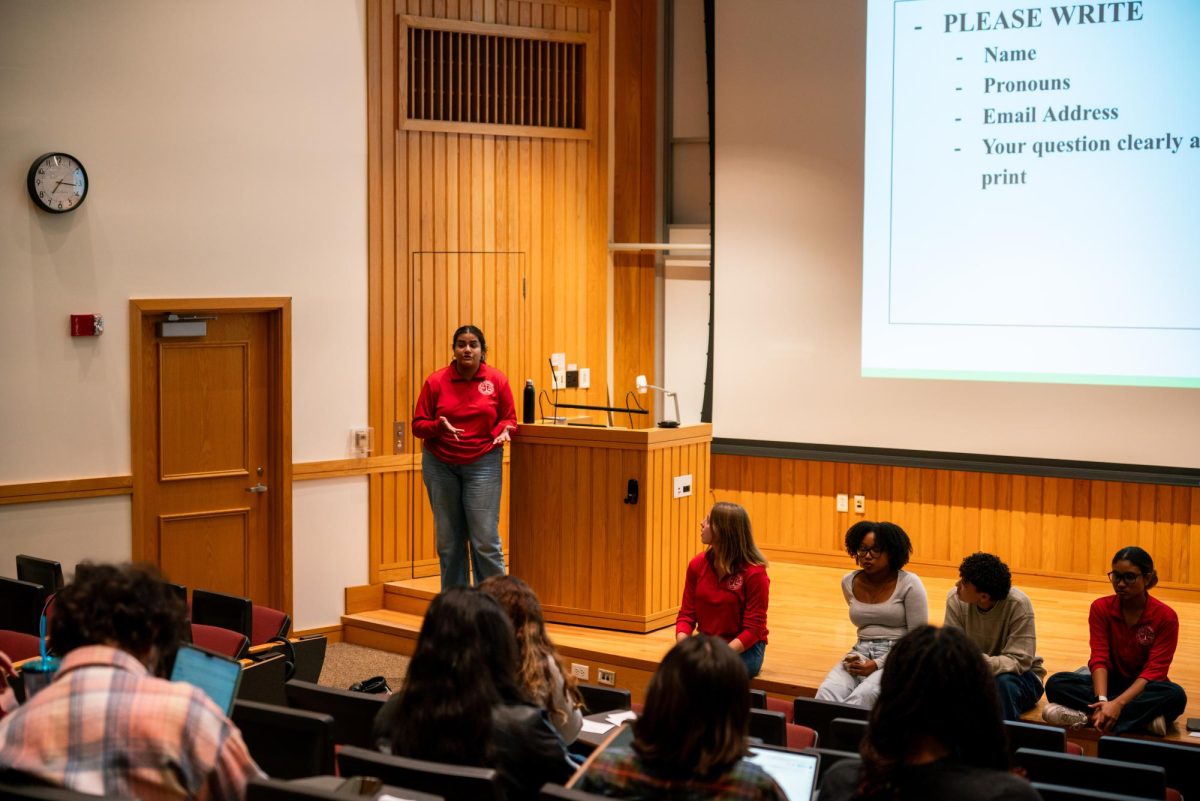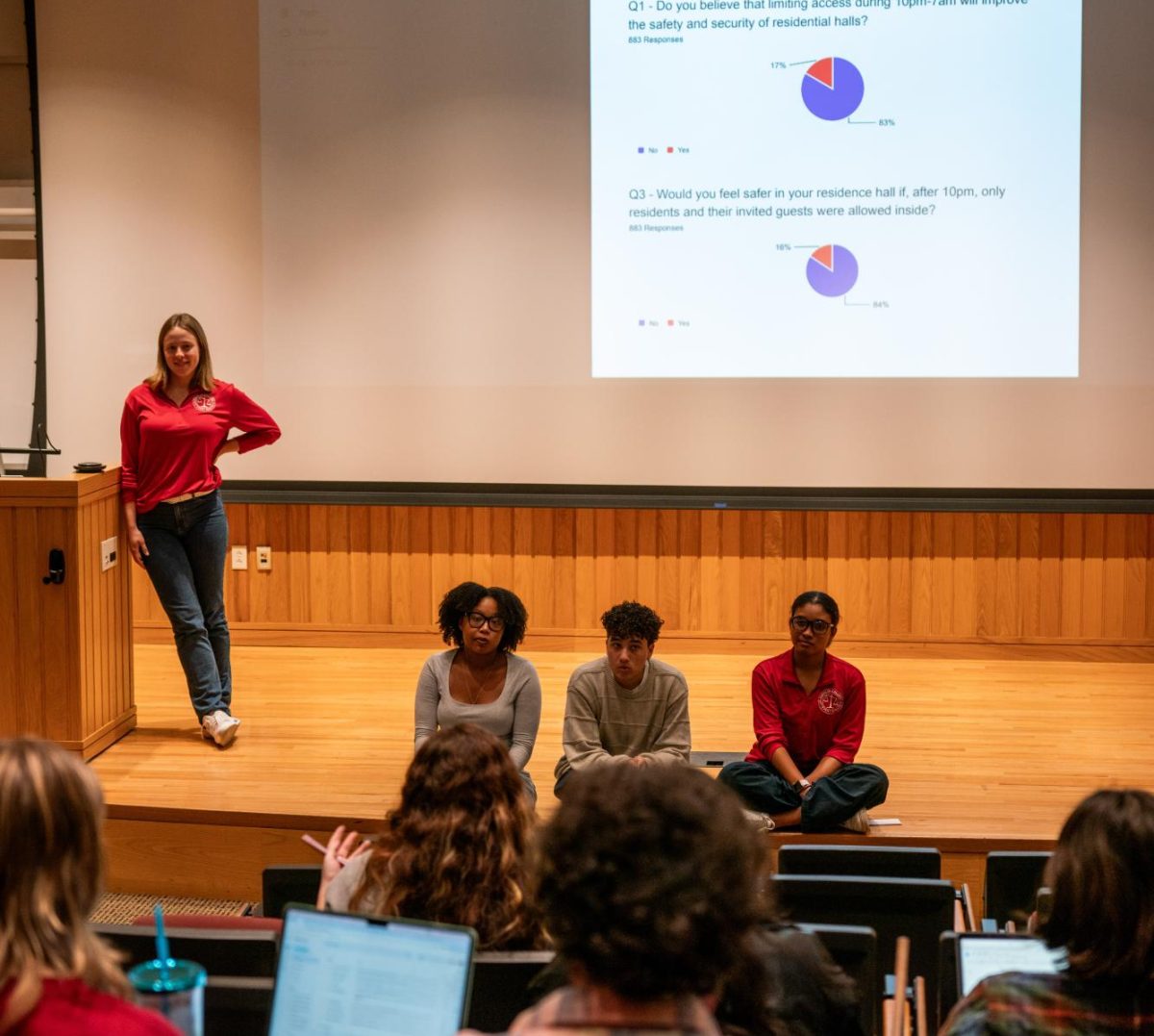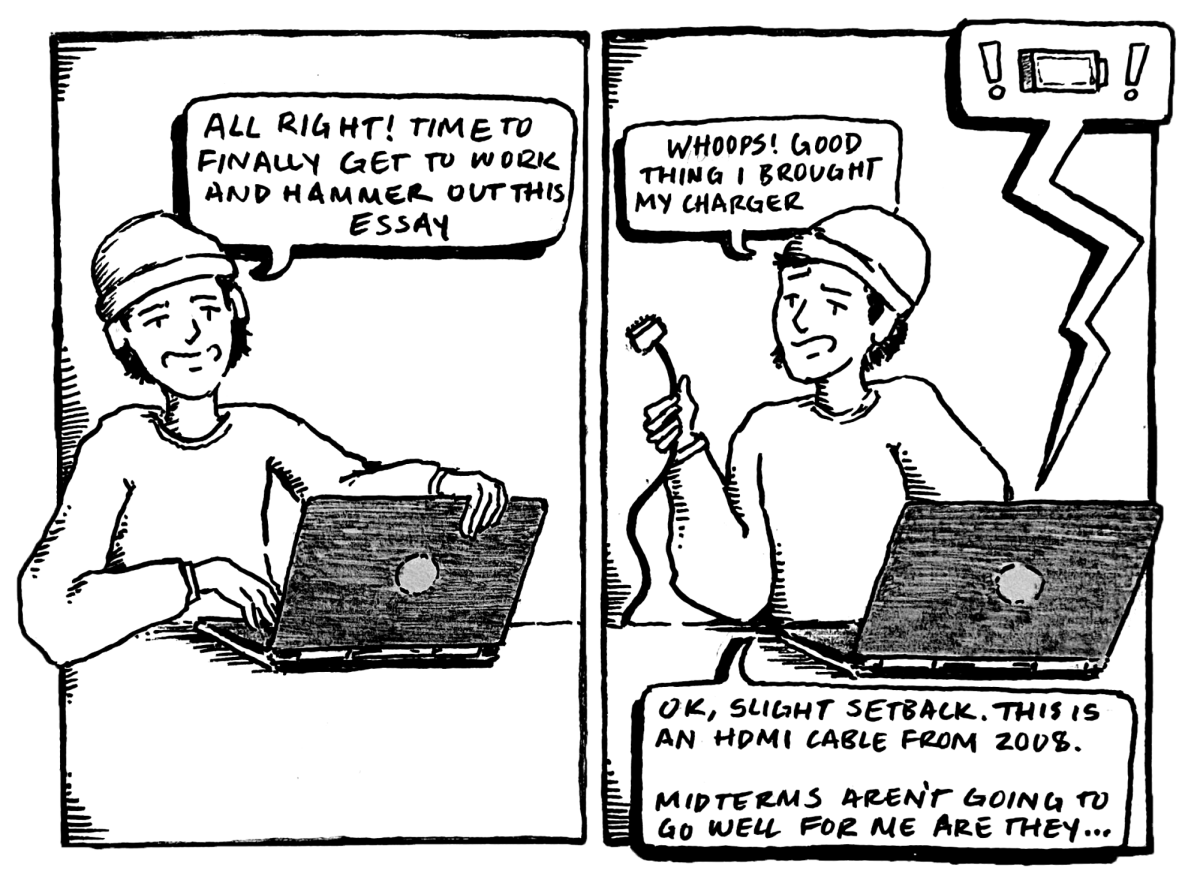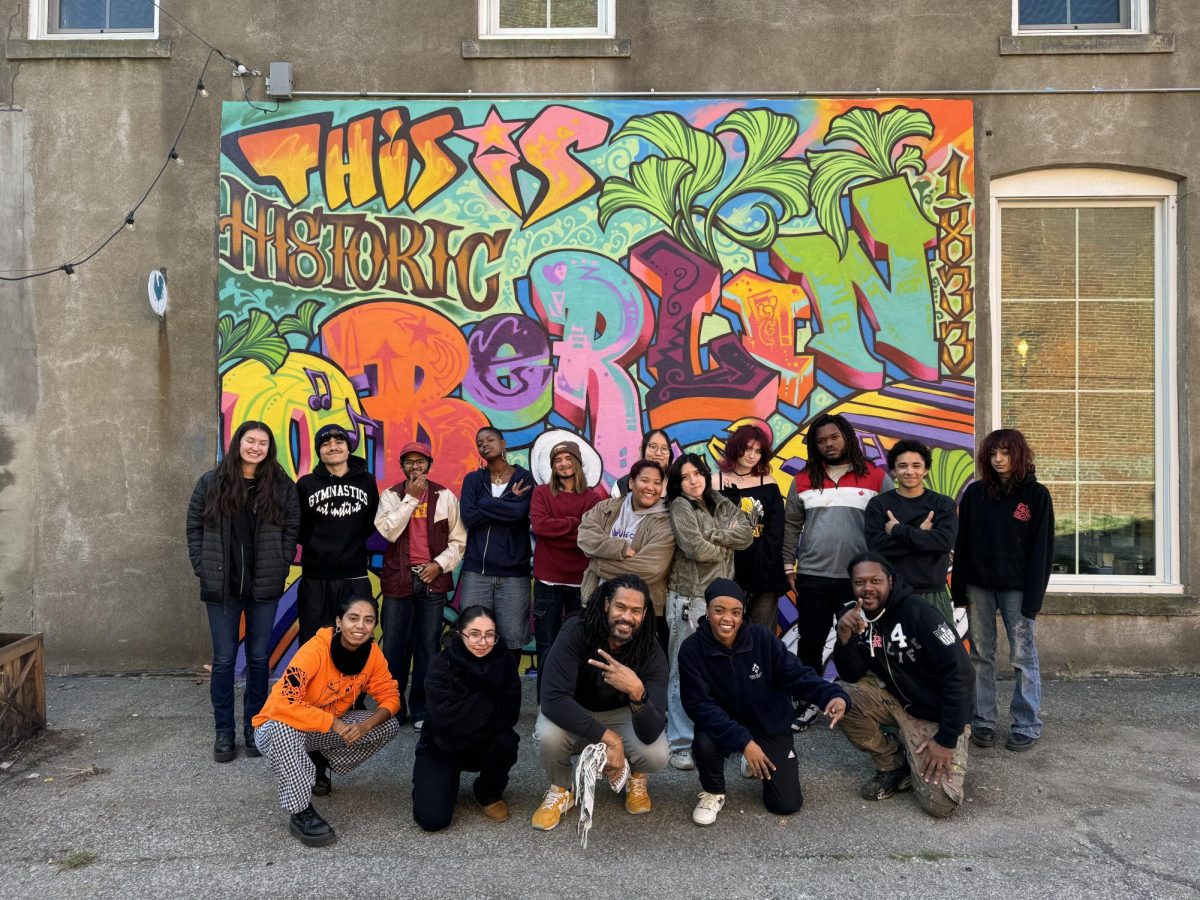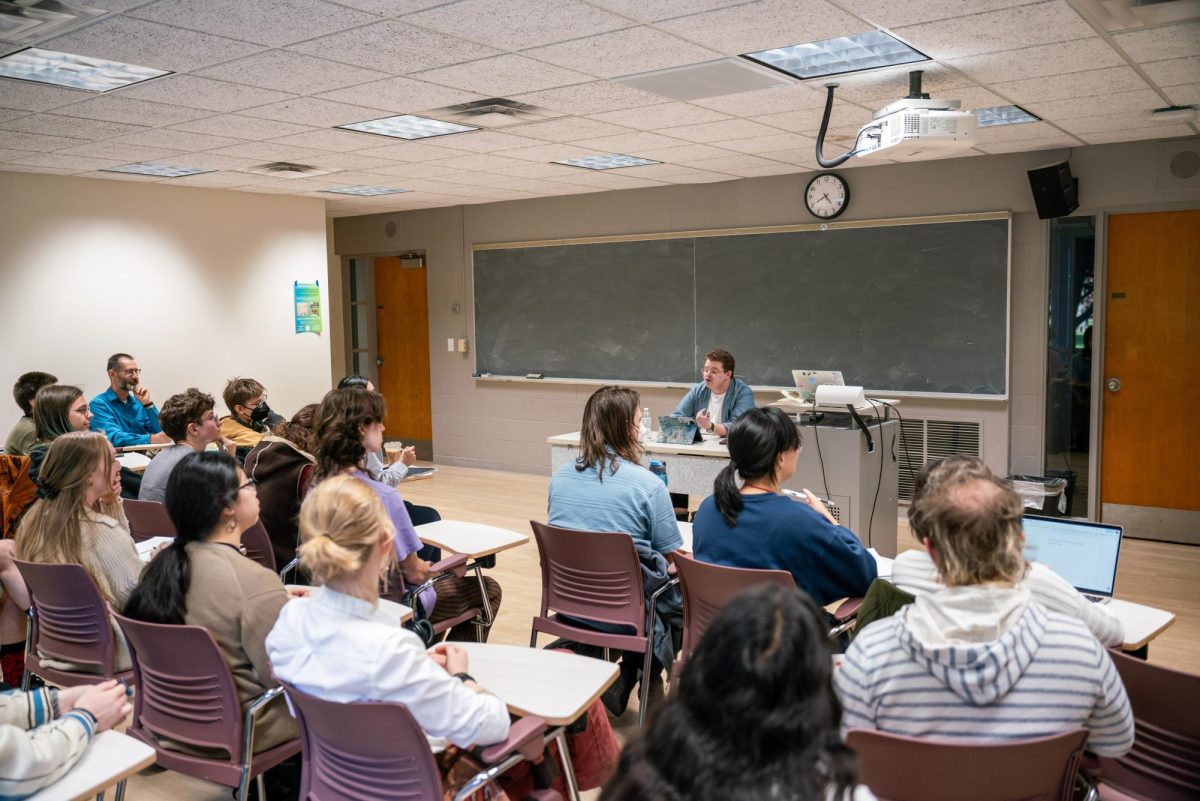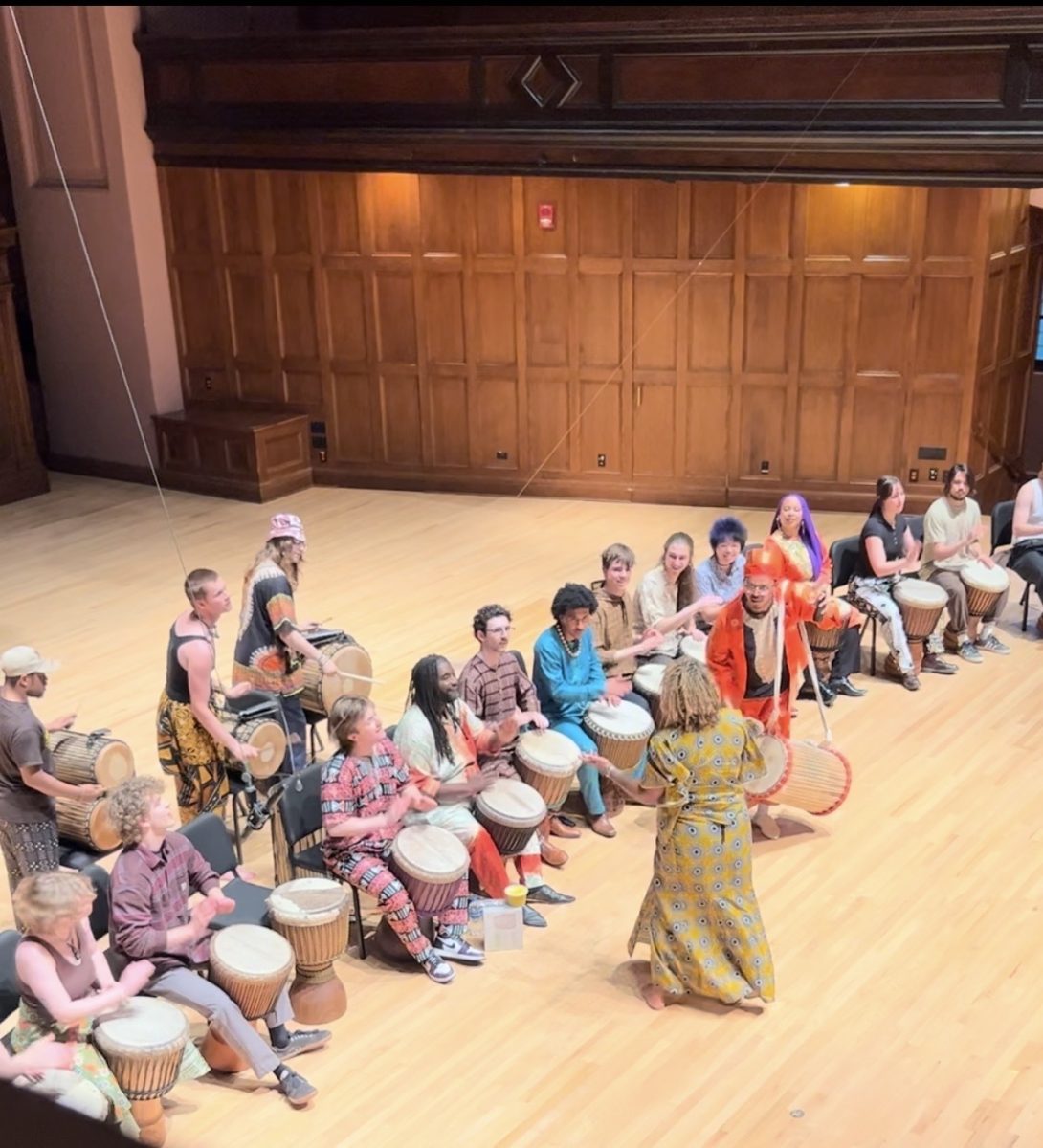Sex in the Kitchen; Surprisingly, A Renaissance Iconography Lecture
March 8, 2013
Chances are, when you visit a museum and stroll through the Renaissance paintings, you don’t spend more than a few minutes on each piece. You may take a moment to admire the immaculate technique and skillful precision in which artists like Dürer, Rembrandt and Titian portray humans and their surrounding scenery. What you probably don’t pay attention to are the symbols these artists pack into some of their most masterful pieces, many of them sexual. If you thought sneaking penises into works of art was something new, art historian Patricia Simons will have you know it is definitely not.
When Simons, a University of Michigan professor, scholar and art historian, visited last Thursday, she held an hour-long lecture that included snippets and condensed sections from her latest book titled The Sex of Men in Pre-modern Europe (2011). In return, she asked the audience to come with a sense of humor.
Beginning with a description of semiotics, the study of signs, symbols and visual metaphors – Simons quickly delved into the sexual nature of her lecture. “Semen-otics,” as she calls it, pervaded much of the visual art of the Renaissance. These metaphors, which are sometimes obvious and sometimes so latent only a keen eye could pick them out, carry a wide range of implications. Simons went through dozens of great examples of sexually charged visual puns. A “Volcano-cock” in Titian’s “Danaë,” “Semen air and water” in Botticelli’s “The Birth of Venus,” and penis-shaped drinking vessels found in a German nunnery are just a few of the fascinating examples Simons had to show the audience, who could not stop laughing at her racy descriptions. Perhaps the most interesting facet of Simons’ lecture, however, was the way she suggested food as an allegory for sex in many Renaissance paintings. These metaphors, which build on common knowledge, often put emphasis on semen as a valuable resource. In this same vein, Simons suggested that because of the paramount importance of semen, the penis itself is of no great concern and serves as merely a “tool.” Furthering this theory, Simons’ referenced Vincenzo Campi’s “Ricotta Eaters,” an image rampant with sexual imagery. Campi’s painting portrays four peasants stuffing their faces with a Ricotta cake. “Look!” Simons said, “His mouth is overflowing with the white stuff!”
Simons’ lecture was not only interesting and highly educational, but was also hilarious and at times almost uncomfortably raunchy. Her investigation of Renaissance art was eye-opening and asked observers to look closely at every part of the work. Viewers often take for granted the thought process the Renaissance masters worked into every detail of their paintings. Whether sexual or political, masterful paintings often have hidden meanings that pertain closely to the time in which they were created. The sexual symbolism Simons researches was commonly understood by Renaissance aristocrats, and it was assumed that lower class citizens wouldn’t understand the hidden imagery.






